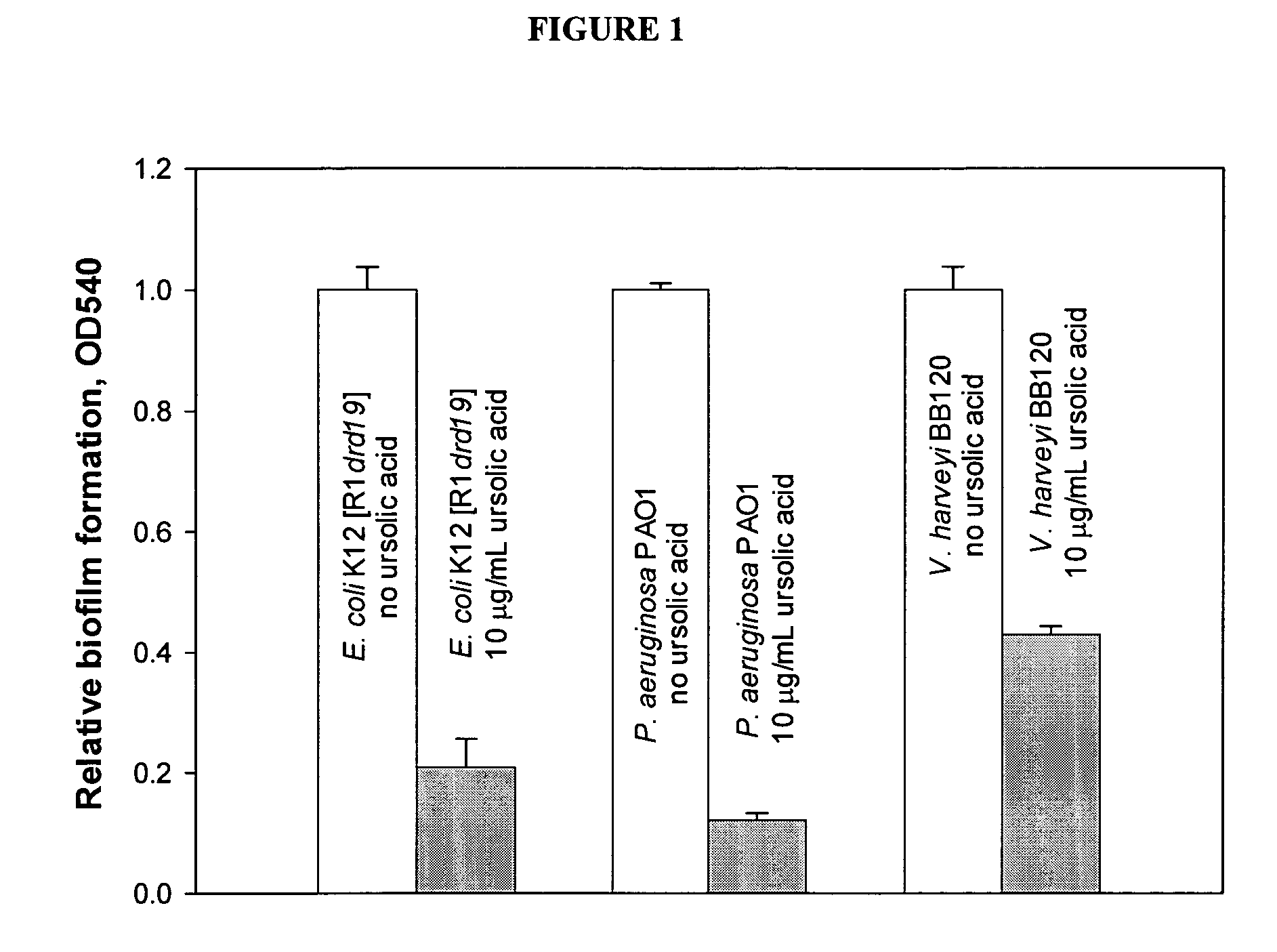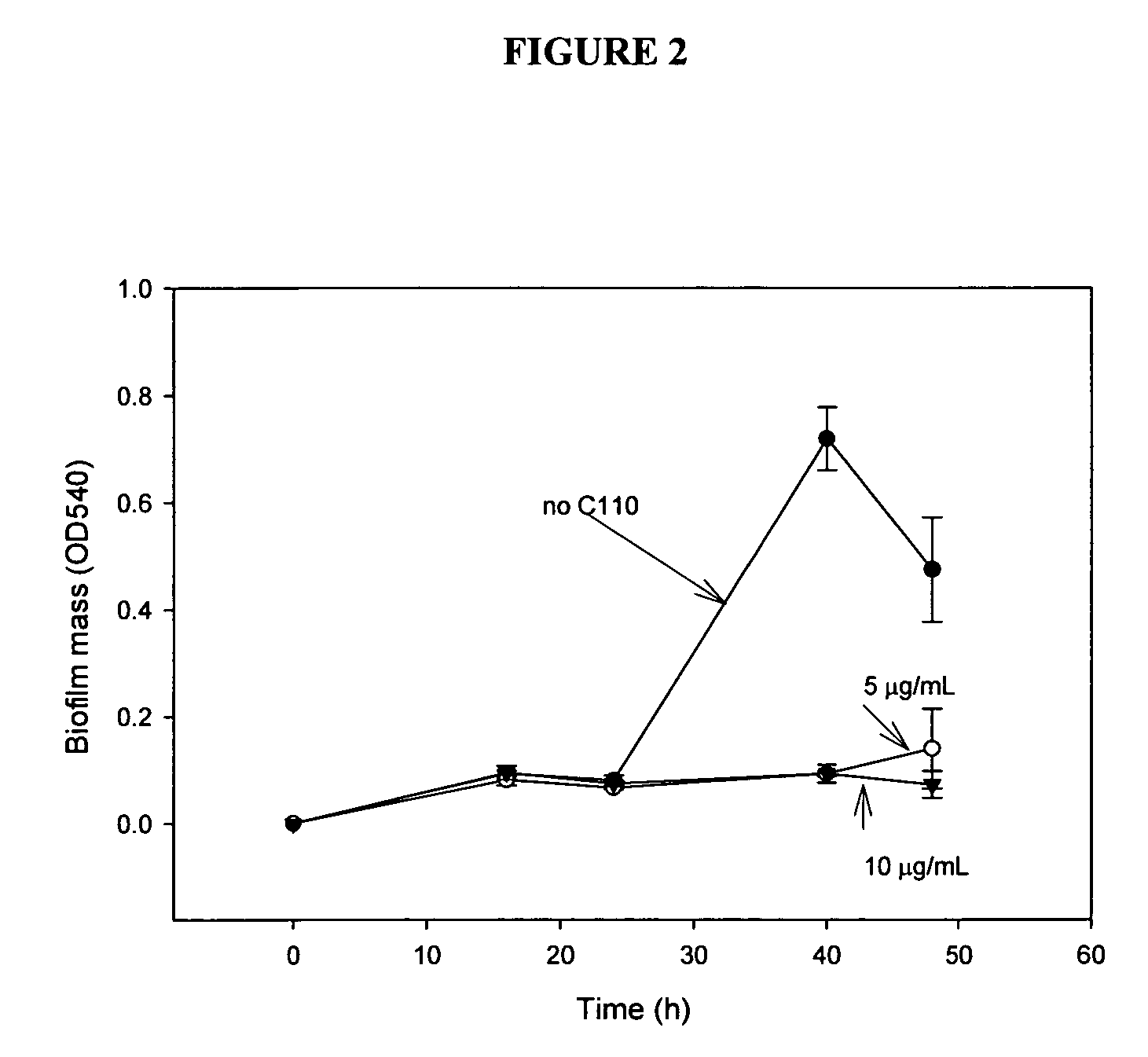Inhibition of biofilm formation
- Summary
- Abstract
- Description
- Claims
- Application Information
AI Technical Summary
Benefits of technology
Problems solved by technology
Method used
Image
Examples
example 1
[0044] Inhibition of biofilm formation by E. coli K12 [R1drd19], P. aeruginosa PAO1, and V harveyi BB120 by the addition of 10 μg / mL ursolic acid. For E. coli K12 [R1drd19], data were collected 16 hours after addition of ursolic acid to a 24 hour biofilm in LB medium; for P. aeruginosa PAO1, data were collected 18 hours after addition of ursolic acid with inoculation in LB medium plus 1% sodium citrate; and for V. harveyi BB 120, data were collected 18 hours after addition of ursolic acid with inoculation in M9 medium. All biofilm mass readings at OD540 were normalized based on the reading of wild type without ursolic acid which was normalized to 1. One standard deviation is shown. The results are shown in FIG. 1.
example 2
[0045] Example 1 was repeated, except ursolic acid was added with inoculation in E. coli JM109 grown in LB 0.2% glucose. Ursolic acid inhibited air-liquid interface biofilm. The results are shown in FIG. 2.
example 3
[0046] To identify the genes controlled by ursolic acid, E. coli K12 was grown in LB medium overnight, diluted 1:100 in fresh LB supplemented with 0, 10, or 30 μg / mL ursolic acid. The same amount of ethanol was supplemented to eliminate solvent effects. The cultures were grown to an OD600 of 0.9. The cells were centrifuged in a microcentrifuge for 15 seconds at 20,000×g in mini bead beater tubes (Biospec, Bartlesville, Okla.) that were cooled to −80° C. before sampling. The cell pellets were flash frozen in a dry ice-ethanol bath and stored at −80° C. until RNA isolation.
[0047] To lyse the cells, 1.0 mL RLT buffer (Qiagen, Inc., Valencia, Calif.) and 0.2 mL 0.1 mm zirconia / silica beads (Biospec) were added to the frozen bead beater tubes containing the cell pellets. The tubes were closed tightly and beat for 30 seconds at the maximum speed in a mini bead beater (cat. no. 3110BX, Biospec). The total RNA was isolated by following the protocol of the RNeasy Mini Kit (Qiagen) including...
PUM
| Property | Measurement | Unit |
|---|---|---|
| Fluorescence | aaaaa | aaaaa |
Abstract
Description
Claims
Application Information
 Login to View More
Login to View More - R&D
- Intellectual Property
- Life Sciences
- Materials
- Tech Scout
- Unparalleled Data Quality
- Higher Quality Content
- 60% Fewer Hallucinations
Browse by: Latest US Patents, China's latest patents, Technical Efficacy Thesaurus, Application Domain, Technology Topic, Popular Technical Reports.
© 2025 PatSnap. All rights reserved.Legal|Privacy policy|Modern Slavery Act Transparency Statement|Sitemap|About US| Contact US: help@patsnap.com



